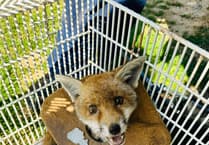THE site of a Roman fort in Calstock will be featuring on the TV show, The Great British Dig.
The site is only the third Roman fort to have been found in Cornwall and is thought to date from the 1st century AD.
The Great British Dig, presented by Hugh Dennis alongside a team of three archaeological experts will be filming at the Calstock site next week as part of their series uncovering the lost history of Britain.
The Channel 4 team will be in Calstock from Wednesday (October 5) until Sunday (October 9) to try and find out more about the Roman site.
On the Sunday, a dig HQ will be open to allow the local community to come and take a look at the fort and their discoveries.
Nick Frend, producer and director of The Great British Dig said: ‘We want to get a greater understanding of the Roman fort that is there.’
‘We want to try and understand what it would’ve been like to live there.
‘It’s an interesting site. Up until recently not much was known about the Romans in Cornwall.
‘We thought it would be a great site to visit.’
The fort is located on a spur above the river Tamar near St Andrew’s Church in Calstock. The team will be filming at three locations in and around the fort.
The Roman fort was discovered unexpectedly in 2007 by a University of Exeter team that was investigating medieval silver mining in Bere Ferrers on the opposite side of the Tamar. The fort measures circa 170m by 160m and is larger than the other two forts in Cornwall which are located in Nanstallon and Restormel.
This excavation will be the seventh exploration of the site with previous excavations taking place between 2008 and 2021.
Dr Chris Smart, a research fellow in the Department of Archaeology at the University of Exeter and who was involved with discovering the site will be the on-screen expert for the team. Chris said: ‘The fort is a rarity archaeologically in Cornwall and even in Devon. Every exploration allows us to explore more. To explore how the Roman army moves around the South West. We want to look at the archaeology and check how well it is preserved. We also have a projected line of the mineral land, but there is no record of any historic mining. We want to find out whether this was an active mine and whether the fort may be located to exploit mineral deposits.
We will also be able to reinvestigate a Roman road.’
Chris explained that the site can be used as a case study to build a picture of other locations.
Around 10-15 volunteers who are mainly members of the direct community will be involved in the dig.
‘It’s a really great opportunity for local people to see their local site promoted on a broad platform and it’s also a bit of fun too’, said Chris.
Chris suggested that this will probably be the last excavation conducted at the site and he hopes to publish all the research from over the years by the end of next year.
If people wish to visit the site on Sunday (October 9), the fort will be open between 9am-10am. Further details can be found by emailing Nick Frend at: [email protected].



